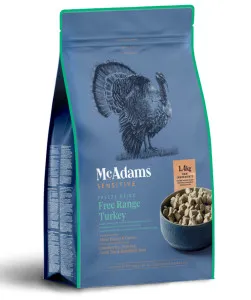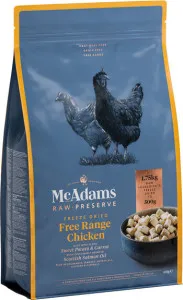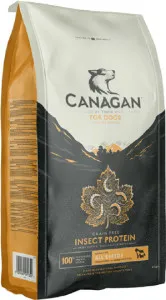What Happens If You Feed Your Dog Raw Food?
Feeding your dog a raw food diet can lead to improved digestion, shinier coats, and higher energy levels, but it also carries risks like bacterial infections and nutritional imbalances if not properly managed. Many pet owners swear by the benefits of raw feeding, while veterinarians often caution against potential dangers. The truth lies somewhere in between—raw diets can be great for some dogs but require careful planning and hygiene to avoid health issues.
The Benefits of a Raw Food Diet for Dogs
Proponents of raw feeding argue that dogs thrive on a diet closer to what their ancestors ate. Here are some potential benefits:
- Healthier skin and coat – The natural oils and fatty acids in raw meat can lead to a shinier, softer coat.
- Improved digestion – Many dogs experience less bloating and firmer stools on a raw diet.
- Stronger immune system – Raw food contains natural enzymes and nutrients that may boost immunity.
- Better dental health – Chewing raw bones can help reduce plaque and tartar buildup.
- Increased energy – Some owners report their dogs become more active and playful after switching to raw.
- Bacterial contamination – Raw meat can contain salmonella, E. coli, or listeria, which can make both dogs and humans sick.
- Nutritional imbalances – Without careful planning, dogs may miss essential vitamins and minerals.
- Choking hazards – Bones can splinter and cause intestinal blockages or perforations.
- Higher cost – Quality raw diets are often more expensive than commercial kibble.
- Time-consuming preparation – Properly balancing a raw diet requires research and meal prep time.
- Prey model – Mimics whole prey animals with meat, bones, and organs
- BARF diet (Biologically Appropriate Raw Food) – Includes meat, bones, organs, vegetables, and supplements
- Commercial raw – Pre-made raw meals available frozen or freeze-dried
- Home-prepared – Custom meals you make yourself following nutritional guidelines
- Consistent energy levels throughout the day
- Small, firm stools that are easy to pick up
- Reduced allergy symptoms or skin irritations
- Healthy weight maintenance
- Bright eyes and clean teeth
- Your dog has a compromised immune system
- You have young children or immunocompromised family members at home
- Your dog has certain health conditions (consult your vet first)
- You're uncomfortable handling raw meat or can't commit to proper food safety
- Mix some raw food with high-quality kibble
- Use freeze-dried raw as a topper
- Offer raw bones occasionally for dental health
- Try gently cooked fresh food instead of completely raw
The Risks of Feeding Your Dog Raw Food
While the benefits sound appealing, raw diets aren't without their drawbacks. Here are the main concerns:
How to Safely Feed Your Dog Raw Food
If you decide to try raw feeding, follow these safety guidelines:
1. Choose High-Quality Ingredients
Source meat from reputable suppliers that follow food safety standards. Look for human-grade meats whenever possible.
2. Maintain Proper Hygiene
Always wash your hands, surfaces, and bowls thoroughly after handling raw meat to prevent bacterial spread.
3. Balance the Diet Properly
A complete raw diet should include muscle meat, organ meat, bones, and sometimes vegetables or supplements. Consider consulting a veterinary nutritionist or using our Pet Food Analyzer to ensure proper balance.
Recommended Products

McAdams Freeze Dried Free Range Turkey is an excellent choice for what happens if you feed your dog raw food?. This dog food contains Boneless Free Range Turkey 86.5% and other high-quality ingredients that promote overall health.

McAdams Freeze Dried Free Range Chicken is an excellent choice for what happens if you feed your dog raw food?. This dog food contains Boneless Free Range Chicken 86% and other high-quality ingredients that promote overall health.

Canagan Insect is an excellent choice for what happens if you feed your dog raw food?. This dog food contains Freshly Prepared Insects (27%)* and other high-quality ingredients that promote overall health.
4. Transition Slowly
Introduce raw food gradually over 7-10 days to allow your dog's digestive system to adjust.
5. Monitor Your Dog's Health
Watch for any signs of digestive upset, lethargy, or other health changes when switching diets.
Common Raw Food Diet Options
There are several approaches to raw feeding:
Signs Your Dog Is Thriving on Raw Food
How can you tell if raw feeding is working for your dog? Look for these positive indicators:
When to Avoid Raw Feeding
Raw diets may not be suitable for all dogs. Avoid raw feeding if:
Alternatives to Full Raw Feeding
If you're interested in some benefits of raw food but concerned about the risks, consider these compromises:
Remember, every dog is different. What works for one may not work for another. The most important thing is finding a nutritious diet that keeps your dog healthy and happy. If you're considering switching to raw food, use our Pet Food Analyzer to help make an informed decision about your dog's nutritional needs.
